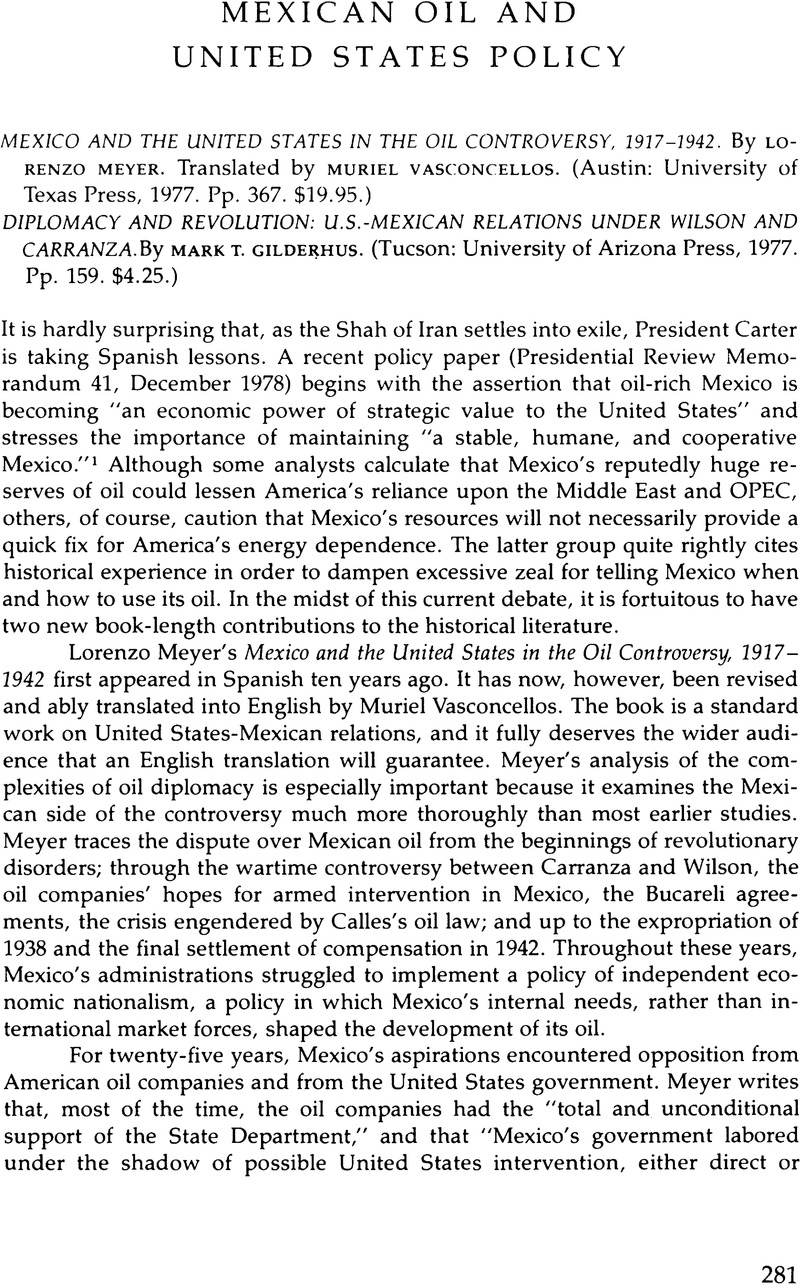No CrossRef data available.
Published online by Cambridge University Press: 24 October 2022

1. Washington Post, 15 Dec. 1978.
2. Meyer developed this theme at greater length in his Los grupos de presión extranjeros en el México revolutionario, 1910–1940 (México, 1973).
3. See, for example, Kenneth Grieb, The Latin American Policy of Warren G. Harding (Fort Worth, 1976); Robert F. Smith, The United States and Revolutionary Nationalism in Mexico, 1916–2932 (Chicago, 1972); Joseph Tulchin, Aftermath of War (N.Y., 1971). Also see N. Stephen Kane, “American Businessmen and Foreign Policy: The Recognition of Mexico, 1920–1923,” Political Science Quarterly 90 (Summer 1975): 293–313; “Corporate Power and Foreign Policy: Efforts of American Oil Companies to Influence United States Relations with Mexico, 1920–1928,” Diplomatic History 1 (Spring 1977): 170–98; and “Bankers and Diplomats: The Diplomacy of the Dollar in Mexico, 1921–1924,” Business History Review 43 (Autumn 1973): 335–52.
4. Friedrich Katz, “Pancho Villa and the Attack on Columbus, New Mexico,” American Historical Review 83 (Feb. 1978): 101–30.
5. See Emily S. Rosenberg, “Economic Pressures in Anglo-American Diplomacy in Mexico, 1917–1918,” Interamerican Studies and World Affairs 17 (May 1975): 123–52.
6. Meyer's account may profitably be supplemented by Peter Calvert, The Mexican Revolution, 1910–1914: The Diplomacy of Anglo-American Conflict (Cambridge, 1968): Jorge Basurto, El conflicto internacional en torno al petróleo de México (México, 1976); and Ray Gerhardt, “Inglaterra y el petróleo mexicano durante la primera guerra mundial,” Historia Mexicana 25 (jul.–sept. 1975): 118–42.
7. Antonio J. Bermúdez, La política petrolera mexicana (México, 1976).